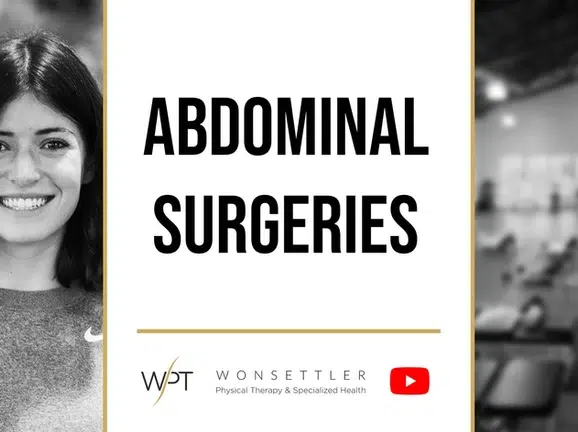Abdominal surgeries impact the way your lumbopelvic system functions – including your low back, abdominal muscles, hips and pelvic floor. However, it is rare patients receive any post-operative treatment. Whether you’ve had a surgery a couple months ago or years ago, if you are experiencing dysfunction in this lumbopelvic system, you may be the perfect candidate for some physical therapy.
Your abdomen houses your vital organs, so this area needs to have a rich blood supply so that these organs can get the blood and nutrients needed. This is a wonderful thing because this area heal very well after surgery, however this may also lead to copious amounts of scar tissue.
Most people receiving abdominal surgeries do not receive preoperative education or post-operative care leading scars to be mismanaged or not managed at all. The appearance of a scar can be deceiving. You can think of a scar as an iceberg. On the surface the scar may look small and well healed, but under the surface the scar may contain deep adhesions wrapping around the organs and affecting the underlying fascia, skin or muscle. The research demonstrates that 50-100% of patients will develop adhesions after any abdominal/pelvic surgery. Scar tissue is a normal part of healing, however when there’s too much of it there can be limitations in mobility affecting function.
Scar tissue formation in the abdominal region can contribute to low back pain, pelvic pain, pelvic floor dysfunction (constipation, incontinence), muscular coordination issues.
This scar tissue formation does not have to be permanent! Some options include soft tissue mobilization, scar tissue massage and visceral mobilization which can all happen in the physical therapy setting. Surgery is also an option, but there is a risk of creating more scar tissue.
It’s not too late! Even if a scar is 20 years old, we can help.
References:
Aloiaet al. Reoperativesurgery: a critical risk factor for complications inadequately captured by operative reporting and coding of lysis adhesions. J Am CollSurgery. 2014: 219(1). 143-150.
Baker et al. A review of therapeutic ultrasound: biophysical effects. Physical Therapy. 2001: 81(7). 1351-1358.
Forbes. Crohn’s disease: rehabilitation after resection. Dig Dis. 2014: 32(4). 395-398.
Kannan P et al. Training Alone and in Combination With Biofeedback, Electrical Stimulation, or Both Compared to Control for Urinary Incontinence in Men Following Prostatectomy: Systematic Review and Meta-Analysis. Phys Ther2018 Nov; 98(11):932-945
Loos et al. The Pfannenstielincision as a source of chronic pain. ObstetGynecol. 3008: April 111(4);839-846

